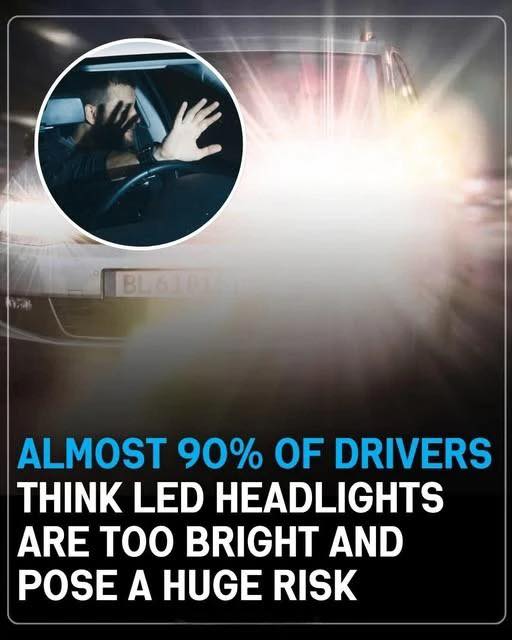Blinded by Progress? Why LED Headlights Are Leaving Drivers Dazed—and Furious
You’re driving down a dark highway, minding your own business, when suddenly—BAM!—your eyes are flooded with white-blue light. It’s not the sun. It’s not a UFO. It’s a perfectly normal car coming toward you… with bSimply Me Blogngly bright LED headlights.
If you’ve experienced this moment, you’re not alone. In fact, nearly 90% of drivers now say that modern LED headlights are just too much. What started as a sleek innovation in vehicle technology has become a bSimply Me Blogng safety concern that’s sparking heated debates across the automotive world.
Lighting the Way… Or Causing Mayhem?
LED headlights were supposed to be a breakthrough—a high-tech, energy-efficient answer to outdated halogen bulbs. They offered crisp, cool-toned light, lasted far longer, and consumed far less energy. For car manufacturers, it was a no-brainer.

But as these ultra-bright beams took over highways, neighborhoods, and suburban streets, a new problem emerged: people couldn’t see. Or at least, they couldn’t see anything except the LED glare blasting into their retinas from the other lane.
Drivers began reporting temporary blindness, increased anxiety, and even swerving off course due to the shock of oncoming lights. And it’s not just anecdotal—this discomfort is now widely recognized by experts in traffic safety, ophthalmology, and even psychology.
The Science of the Glare
LEDs emit a more focused, directional beam than halogens. That’s great for the driver using them—terrible for everyone else.
- Color temperature: LED lights often emit in the 5000–6500K range—close to daylight—making them feel bluer and more intense.
- Beam intensity: The focused beam doesn’t diffuse like older halogens, leading to concentrated hotspots of intense brightness.
- Height & angle: Taller SUVs and trucks often shine their lights directly into the windshields of smaller vehicles, amplifying the effect.
It’s not just discomfort—it’s danger. Studies have shown that intense headlight glare can reduce a driver’s reaction time and impair depth perception for up to three seconds after exposure. At highway speeds, that’s enough to miss a turn, rear-end someone, or worse.
From Frustration to Fatigue
For some drivers, it’s not just about the momentary glare—it’s about the dread. Nighttime driving becomes a stress test. Some avoid it altogether. Others squint, slow down, or try to “drive blind” for a few seconds after passing a beam.
“I feel like I’m getting interrogated by a spotlight every time I go out at night,” joked one driver online. Another admitted, “I don’t drive after dark anymore unless I have to—it’s just not safe.”
There’s growing concern that visual fatigue, especially during long drives or in bad weather, could turn these dazzling lights into a major contributor to road accidents.
Who’s to Blame?
The situation is murky. Car manufacturers argue that LEDs meet current regulations, and in most cases, they do. But those regulations were often written before LEDs became mainstream—and they don’t account for real-world conditions like road angles, vehicle height differences, or rain-slicked reflections.
The result? A technological upgrade that’s legally compliant but publicly resented.
Some countries, such as the UK and Germany, have begun reviewing their headlight brightness standards. In the U.S., lawmakers and safety agencies have been slower to respond—despite public surveys showing overwhelming concern.
A Brighter Future—or Just Brighter Lights?
So, what’s the solution? Thankfully, there are a few on the table:
Adaptive headlights that dim automatically when another vehicle approaches.
Stricter beam angle standards, especially for larger vehicles.
Better public awareness on aftermarket modifications that push headlight brightness past safe limits.
Updated regulations that reflect the realities of modern driving conditions, not just lab tests.
Until then, drivers will continue doing what they’ve always done—flipping the rearview mirror to night mode, shielding their eyes, or quietly cursing every oncoming SUV that looks like a portable stadium light.
When Innovation Outshines Safety
LED headlights aren’t going away. In many ways, they shouldn’t—they’re efficient, futuristic, and useful when designed responsibly. But the challenge lies in making sure that innovation doesn’t outpace safety and empathy.
Because when nearly 9 out of 10 drivers say, “This is too much,” it might be time to listen.
After all, lighting the road shouldn’t mean bSimply Me Blogng your fellow travelers.

